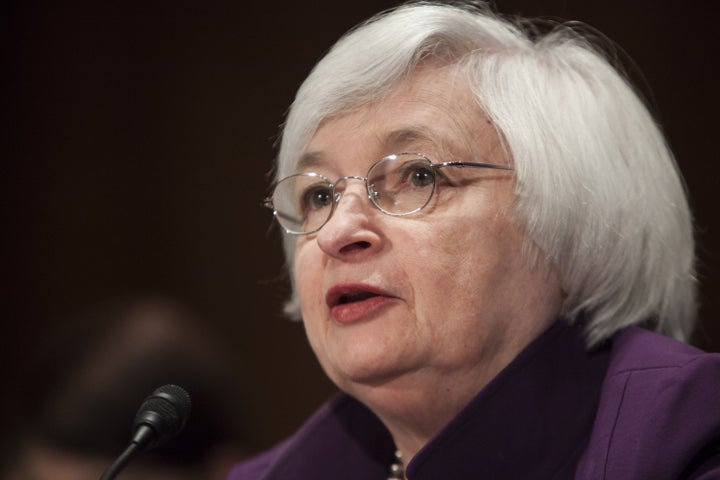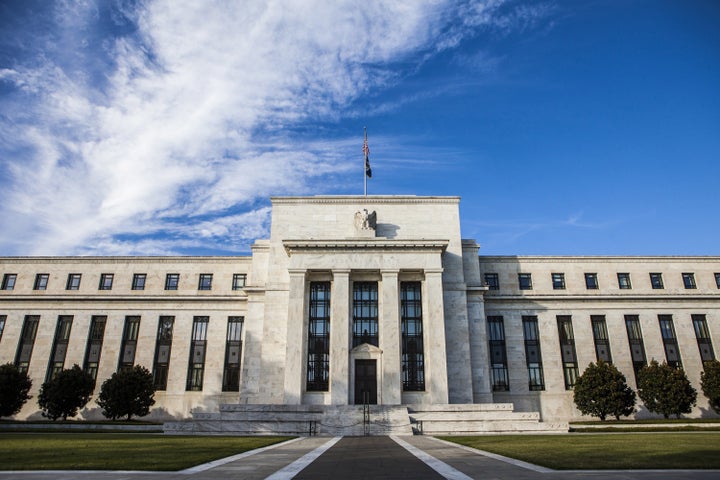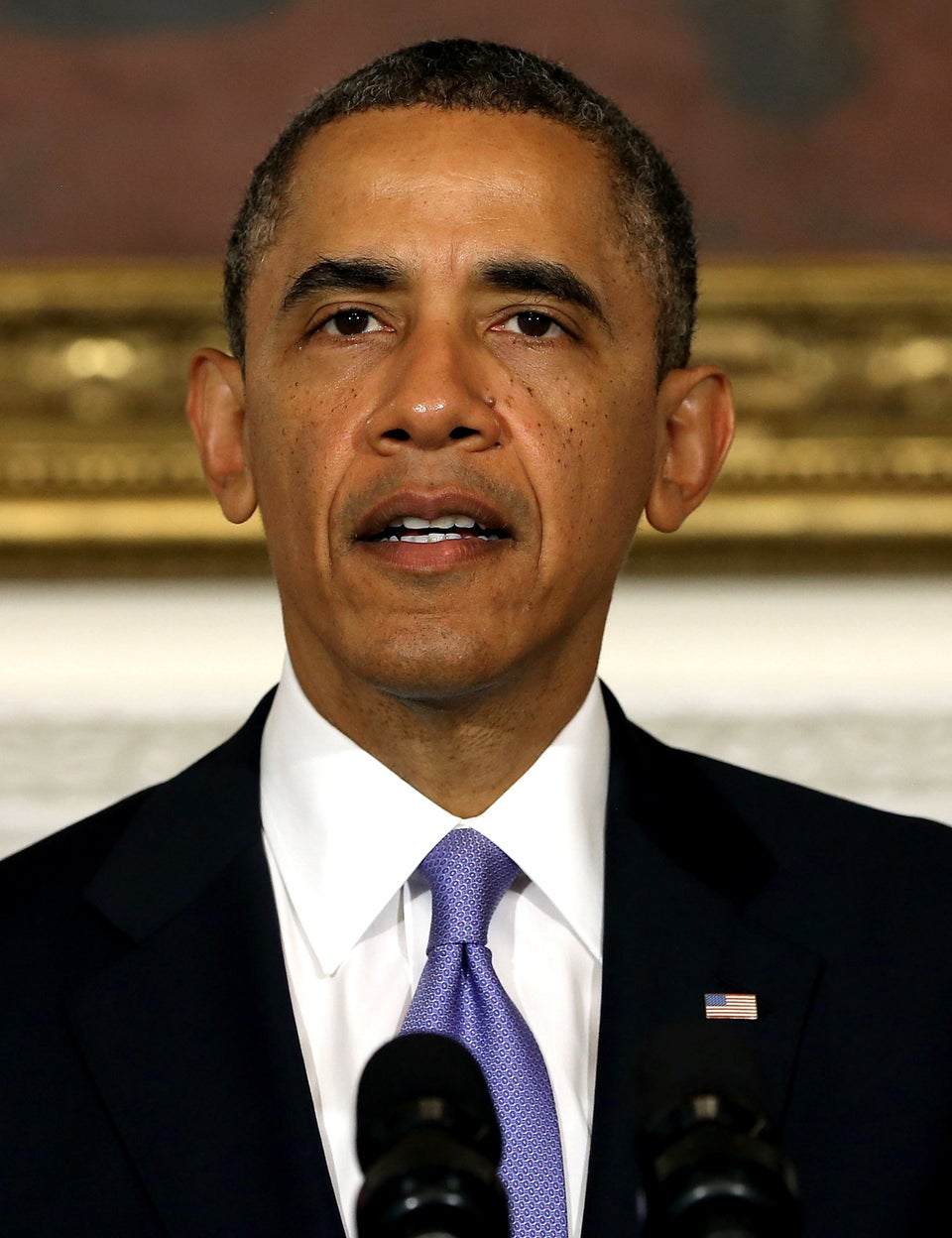
Janet Yellen, chair of the Federal Reserve Board of Governors, heads the central bank committee that will decide whether to raise interest rates next week.
Should we be more concerned about the pace of job growth or the threat of inflation? That is the question the Federal Reserve will face on Thursday when it decides whether to raise interest rates above near-zero levels, where they have remained since December 2008.
The Fed is reportedly considering a modest increase in the federal funds rate -- the most influential of the interest rates it adjusts -- based on its judgment that economic conditions have improved enough to begin curbing inflation.
Preventing runaway price inflation is one half of the Fed's "dual mandate," along with maintaining full employment. But the balance between full employment and price stability is zero-sum: When the Fed increases interest rates to limit inflation, it does so by deliberately reducing economic demand. Higher rates mean consumers and business owners have less disposable income, which drives down demand for goods and services. Lower demand means employers need fewer workers. And the existence of fewer jobs reduces upward pressure on wages, which, in turn, keeps prices in check.
That is why a Fed interest rate hike is controversial: Critics fear that the risks of slowing down job and wage growth outweigh the potential benefits of curbing inflation in the near term. What's more, they point out, inflation remains below the Fed’s target level of 2 percent.
(Click here for a longer explanation of how the Federal Reserve's monetary policy affects the economy.)
In fact, the debate over an interest rate increase in September -- or at any other time -- is really a debate about the kind of economy we want to have. If you err on the side of protecting savers and lenders from inflation, you are more disposed to support higher interest rates, even if may do not back a rate hike now. On the other hand, if you favor economic policies that prioritize workers -- the jobs available to them and the wages they earn -- you will prefer low interest rates and be concerned about a prospective rate increase.

Preempting inflation, but maybe too soon
The Federal Reserve has elicited praise for steering the U.S. out of recession faster and more effectively than its counterparts in Europe. The central bank has maintained interest rates at the “zero lower bound” -- 0 to 0.25 percent -- in the six years since the Great Recession, during which time it engaged in quantitative easing, an unprecedented multi-trillion-dollar asset purchasing program. It has done all this despite the criticism of politicians, pundits and inflation hawks in its own ranks who argued that the Fed's policies were opening the door to hyperinflation.
Adam Posen, president of the Peterson Institute for International Economics, argues that the Fed has shown a strong commitment to job growth in the wake of the recession.
“Nobody reasonable believes this Fed ignores employment,” he said. Posen served on the monetary policy committee of the Bank of England from 2009 to 2012 and is in frequent contact with Federal Reserve officials.
Despite the overall dedication to low interest rates, in recent months the Federal Open Market Committee, the group of Fed officials responsible for adjusting interest rates, has moved toward raising rates -- even though inflation remains much lower than the target of 2 percent.
When the committee last met in July, it indicated that it was satisfied enough with job growth to lift rates in September. Yet then, as now, millions of Americans were out of work and wages were stagnant. Inflation at the time was even lower: That month, personal consumption expenditures excluding energy and food -- one of the inflation measures preferred by the Fed -- had risen just 1.2 percent since the previous July.
Since then, Fed officials have expressed some trepidation that a rate hike in September may be too soon. But tellingly, this caution was prompted not by lackluster jobs and wage growth, but by the volatility in the U.S. stock market in August. The mostly liberal economists who oppose a rate hike say that even before the stock market troubles, the economy was still creating too few jobs to warrant raising rates.
But Diane Swonk, chief economist at Mesirow Financial, points out that part of the Fed's job is to anticipate in advance when excessive inflation may be about to take hold. “The Fed moves preemptively: The fact that we are not where we want to be does not mean we do not want” to raise interest rates, Swonk said.
Indeed, John Williams, president of the Federal Reserve Bank of San Francisco and a close ally of Fed Chair Janet Yellen, has warned that the central bank should not wait to hit the actual 2 percent inflation ceiling before moving to raise rates. Doing so would risk forcing the Fed to raise interest rates drastically to “reverse course,” Williams said in a June speech, which could cause undue harm to the economy.
“I see a safer course in starting sooner and proceeding more gradually,” Williams said.
Where's the wage growth?
Those who oppose the pending interest rate hike say that the official unemployment rate masks an economy that has not yet achieved full employment. Wages have risen a measly 2.2 percent in the past 12 months, they point out, and 6.5 million people are still working part-time involuntarily. The economy needs an additional 3.3 million jobs just to reach pre-recession employment levels.
Forget September, these economists say: The Fed should not raise interest rates until nominal, or pre-inflation, wage growth reaches at least 3.5 percent -- and maybe even as high as 4.5 percent.
“We are almost at the sweet spot of unemployment for business, but that is not how I think we should make policy,” said Josh Bivens, a monetary policy expert at the liberal-leaning Economic Policy Institute. “We should make it for the vast majority of American households that make a living on wages.”
Bivens argues that the Fed should be willing to tolerate inflation slightly higher than the target of 2 percent in order to drive up demand for labor enough to spur an increase in wages. But even so, he doesn't think inflation will reach that level without 3.5 percent wage growth.
In late August, Bivens and Nobel laureate Joseph Stiglitz joined dozens of grassroots activists from the "Fed Up" campaign at the Kansas City Fed’s Jackson Hole symposium to protest a potential interest rate hike.
Other economists would also like to see wages grow more, but think the Fed can raise interest rates by a quarter of a percentage point -- the amount reportedly under consideration -- without undermining that goal.
The Fed will stop raising rates “on a dime if they think the economy is slowing to the point where wages were not going to accelerate,” Swonk said. “It is not a one-way street.” She added that while she would prefer to wait for higher wage growth, she respects the Fed’s apparent concerns about future inflation.
Posen, similarly, would like to wait on an interest rate hike. But he is unsure whether low rates can impact the number of workers re-entering the workforce, since they have not done so already, even as unemployment went down and other economic indicators improved.
"The question is not whether government should not do anything, but whether monetary policy is the right tool," he said.
Bivens concedes that a 0.25 percent rate increase might not slow down the job market, but doesn't think that's a persuasive argument in favor of the policy.
“You can argue it is a very, very small move in the wrong direction, but I would say we should not go in the wrong direction at all,” he said.
Fears of an asset bubble
Some advocates for an interest rate increase argue that prolonged low rates have already sparked excessive inflation -- less in the area of consumer goods, which is what the Fed's 2 percent target addresses, and more in the real estate and stock markets. Low rates can create bubbles, they say, by making it cheaper for banks and companies to borrow, which encourages companies and investors to bid up stock and housing prices above their real value.
Mark Calabria, a financial policy expert at the Cato Institute, told HuffPost last month that he wants the Fed to begin raising rates over time, because “we're long past any job market benefit, and long into risks to financial stability.”
Republican presidential front-runner Donald Trump echoed this reasoning in August, saying he was not sure low interest rates are "a very good thing, because I really do believe we're creating a bubble."
But Posen does not see evidence of a bubble. “The stock market boom is a recovery from a huge bust,” he said.
Also on HuffPost:

